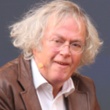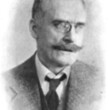My Struggle: Book 1
(Libby/OverDrive eBook, Kindle)
Available Platforms
Description
Winner of the 2009 Brage Prize, the 2010 Book of the Year Prize in Morgenbladet, the 2010 P2 Listeners' Prize, and the 2004 Norwegian Critics' Prize and nominated for the 2010 Nordic Council Literary Prize.
"No one in his generation equals Knausgaard."—Dagens Næringsliv
"A tremendous piece of literature."—Politiken (Denmark)
To the heart, life is simple: it beats for as long as it can. Then it stops. Sooner or later, one day or another, this thumping motion shuts down of its own accord. . . . The changes of these first hours happen so slowly and are performed with such an inevitability that there is almost a touch of ritual about them, as if life capitulates according to set rules, a kind of gentleman's agreement.
Almost ten years have passed since Karl O. Knausgaard's father drank himself to death. He is now embarking on his third novel while haunted by self-doubt. Knausgaard breaks his own life story down to its elementary particles, often recreating memories in real time, blending recollections of images and conversation with profound questions in a remarkable way. Knausgaard probes into his past, dissecting struggles—great and small—with great candor and vitality. Articulating universal dilemmas, this Proustian masterpiece opens a window into one of the most original minds writing today.
Karl O. Knausgaard was born in Norway in 1968. His debut novel Out of This World won the Norwegian Critics' Prize and hisA Time for Everything was nominated for the Nordic Council Prize.
Also in this Series
Published Reviews
Publisher's Weekly Review
Knausgaard's perplexing autobiographical third novel (after A Time for Everything) is by turns a coming of age story-told in fits and starts-and a philosophical exploration of what it means to be a son, brother, and writer. The first in a series of six, this work is at its melancholy best when ruminating on how to survive in a world too minutely examined to trust or love: on the first page, the narrator's focus shifts in a moment from a sentimental note on the life of the heart to an outline of the physical processes of bodily decomposition. And though Knausgaard's sprawling story is rife with vital energies-flitting from the discoveries of childhood to the meditations of a more mature man-death's presence is palpable throughout: Karl's attention is constantly drawn toward the vanishing point of his late estranged, alcoholic father. A profusion of quotidian ephemera-from binge drinking to cigarette after cigarette-serves to highlight the incommensurability of death in light of the banality of life. Though light on plot (or perhaps heavy on it, depending on a reader's estimation of hyperrealist saturation as constituting a storyline), Knausgaard's gorgeous prose and enthralling reflections make this tome a rewarding struggle. (May) © Copyright PWxyz, LLC. All rights reserved.
Booklist Reviews
*Starred Review* Book 4 of Knausgaard's highly regarded magnum opus, a multivolume autobiographical novel, picks up with 18-year-old Karl Ove traveling to Håfjord in northern Norway to teach at a local school. But before the first week of classes has ended, he is invited to two different parties, and at least one student, an attractive young woman, shows up unannounced at his flat. When not busy teaching, out partying, or attempting to begin his career as a writer, Karl Ove spends an inordinate amount of time preoccupied with anxiety over premature ejaculation. And while much of the humor in book 4 derives from Karl Ove's sexual misadventures, the narrator's habitual drinking begins to resemble his own father's alcoholism. These similarities may signal the direction My Struggle will take for the last two installments. In a review of book 3, American novelist Ben Lerner alludes to the decidedly darker themes of books 5 and 6, which ostensibly meditate on Adolf Hitler and Anders Behring Breivik, the shooter who attacked a youth retreat outside Oslo. It will be fascinating to see how Knausgaard weds his intensely personal narrative with events of such national and historical significance. Copyright 2014 Booklist Reviews.
Booklist Reviews
This penultimate installment of Knausgaard's masterful, six-part series opens in August 1988, with Karl Ove hitchhiking back home to Norway after backpacking through Europe. No longer a teenager in search of adventure, Karl Ove resolves to get serious about writing, having been accepted into an elite university program. He faces familiar battles against alcohol and love affairs (the two temptations are often intertwined) but also rejection from publishers and his father's impending death, which has cast shadows over the entire series. Over the course of 14 years, Karl Ove's writing increasingly inhabits a space between genres, drawing strongly from autobiography and including slightly fictionalized details. In a recent interview, Knausgaard admits, "A beer bottle receives the same attention as the concept of love . . . I'm interested in the idea of looking at things without hierarchy, in the world as it is before we start categorizing it." This may frustrate readers preoccupied with plot development, but fans of Knausgaard's indulgent style will revel in every last beer can and krone as the closing chapter of this infamous Norwegian saga approaches. Copyright 2014 Booklist Reviews.
Library Journal Reviews
They're not moody thrillers or sexcapades, but Knausgaard's six-volume autobiographical fiction series has attracted frantic fans worldwide. His excellent writing is at once fluidly absorbing and prodigiously detailed, but not every reader will care for this amount of quotidian self-regard. Here, an 18-year-old Karl Ove, callow, cocky, yet full of self-doubt, heads to a small fishing village in Norway's north to work as a school teacher while laying his grand plans to become a writer. VERDICT Knausgaard captures the coming-of-age experience and our millennial absorption in equal measure for readers who like to sink deeply into daily life.
[Page 93]. (c) Copyright 2014. Library Journals LLC, a wholly owned subsidiary of Media Source, Inc. No redistribution permitted.Publishers Weekly Reviews
Knausgaard's perplexing autobiographical third novel (after A Time for Everything) is by turns a coming of age story—told in fits and starts—and a philosophical exploration of what it means to be a son, brother, and writer. The first in a series of six, this work is at its melancholy best when ruminating on how to survive in a world too minutely examined to trust or love: on the first page, the narrator's focus shifts in a moment from a sentimental note on the life of the heart to an outline of the physical processes of bodily decomposition. And though Knausgaard's sprawling story is rife with vital energies—flitting from the discoveries of childhood to the meditations of a more mature man—death's presence is palpable throughout: Karl's attention is constantly drawn toward the vanishing point of his late estranged, alcoholic father. A profusion of quotidian ephemera—from binge drinking to cigarette after cigarette—serves to highlight the incommensurability of death in light of the banality of life. Though light on plot (or perhaps heavy on it, depending on a reader's estimation of hyperrealist saturation as constituting a storyline), Knausgaard's gorgeous prose and enthralling reflections make this tome a rewarding struggle. (May)
[Page ]. Copyright 2012 PWxyz LLCPublishers Weekly Reviews
Part four of Knausgaard's sprawling autobiographical novel gives a clear picture of narrator Karl Ove's late teenage years and his transition from the reckless abandon of youth to the responsibilities and demands of adulthood. The book centers on the year he spends teaching children—some not much younger than he is—in a provincial town in northern Norway. Though his primary aim is to earn money to finance his writing career, he learns a bit about the quirks of smalltown living, making a few friends and enemies along the way. A large chunk of the book is devoted to the year or so leading up to Karl Ove's decision to take the job, as he begrudgingly finishes high school. These sections give readers a clearer understanding of Karl Ove's life after his parents' divorce, and of his father's downward spiral into alcoholism that ultimately led to his death (as described in book one). Meanwhile, Karl Ove drinks heavily, experiments with drugs, and gets into a bit of trouble. But he also matures and develops his own artistic sensibilities. The internal battle between his carnal urges and his ambitions and morals is an ongoing theme. Unapologetically crude, this entry is the funniest and least self-conscious in the series to date; there's a humorous momentum propelling the narrative as Karl Ove attempts to lose his virginity. Unfortunately, the casual breeziness of the prose can make it hard to keep track of Karl Ove's countless love interests and acquaintances, as many are only briefly mentioned. The book is strongest when Karl Ove is figuring out who he is as a writer, and when he begins to take his craft seriously, hinting at the success that will come in the author's own life. (Apr.)
[Page ]. Copyright 2014 PWxyz LLCPublishers Weekly Reviews
The penultimate entry in Knausgaard's autobiographical series centers on the trials and tribulations of a competitive young writer, as the protagonist, Karl Ove, adjusts to the various responsibilities and expectations of adult life in the city. Told chronologically, the book spans the 14 years the narrator spends living in Bergen, Norway, beginning with his enrollment at an exclusive writing academy, and leading up to the publication of his debut novel. Kept company by his older brother, Yngve, and a rich, memorable cast of supporting characters, Karl Ove leads the life of a self-conscious and hardworking yet feckless young man with lofty literary and romantic aspirations. He takes his craft and the direction of his life seriously but frequently finds his noble, long-term goals pitted against his lower, more immediate urges. Issues with alcohol that surfaced in book four define a good chunk of these pages, as they produce lasting outcomes that affect his relationships. The narrative, like the protagonist, strikes an impressive balance between the interior and exterior, as well as the cerebral and emotional; snappy and amusing episodes coexist alongside weighty, meditative, and essayistic passages on art and literature. The text could have benefited by some additional shaping—especially those portions that fall into a flat, reportorial pace. But the slow-burn buildup and protracted story arcs more than compensate. Those who have come this far in the series will not be disappointed by book five; it is a pleasure to witness the gradual emergence of a dedicated artist over the course of a decade. (Apr.)
[Page ]. Copyright 2016 PWxyz LLCPW Annex Reviews
Knausgaard's perplexing autobiographical third novel (after A Time for Everything) is by turns a coming of age story—told in fits and starts—and a philosophical exploration of what it means to be a son, brother, and writer. The first in a series of six, this work is at its melancholy best when ruminating on how to survive in a world too minutely examined to trust or love: on the first page, the narrator's focus shifts in a moment from a sentimental note on the life of the heart to an outline of the physical processes of bodily decomposition. And though Knausgaard's sprawling story is rife with vital energies—flitting from the discoveries of childhood to the meditations of a more mature man—death's presence is palpable throughout: Karl's attention is constantly drawn toward the vanishing point of his late estranged, alcoholic father. A profusion of quotidian ephemera—from binge drinking to cigarette after cigarette—serves to highlight the incommensurability of death in light of the banality of life. Though light on plot (or perhaps heavy on it, depending on a reader's estimation of hyperrealist saturation as constituting a storyline), Knausgaard's gorgeous prose and enthralling reflections make this tome a rewarding struggle. (May)
[Page ]. Copyright 2012 PWxyz LLCReviews from GoodReads
Citations
Knausgaard, K. O. (2013). My Struggle: Book 1 . Farrar, Straus and Giroux.
Chicago / Turabian - Author Date Citation, 17th Edition (style guide)Knausgaard, Karl Ove. 2013. My Struggle: Book 1. Farrar, Straus and Giroux.
Chicago / Turabian - Humanities (Notes and Bibliography) Citation, 17th Edition (style guide)Knausgaard, Karl Ove. My Struggle: Book 1 Farrar, Straus and Giroux, 2013.
Harvard Citation (style guide)Knausgaard, K. O. (2013). My struggle: book 1. Farrar, Straus and Giroux.
MLA Citation, 9th Edition (style guide)Knausgaard, Karl Ove. My Struggle: Book 1 Farrar, Straus and Giroux, 2013.
Copy Details
| Collection | Owned | Available | Number of Holds |
|---|---|---|---|
| Libby | 1 | 0 | 1 |





































